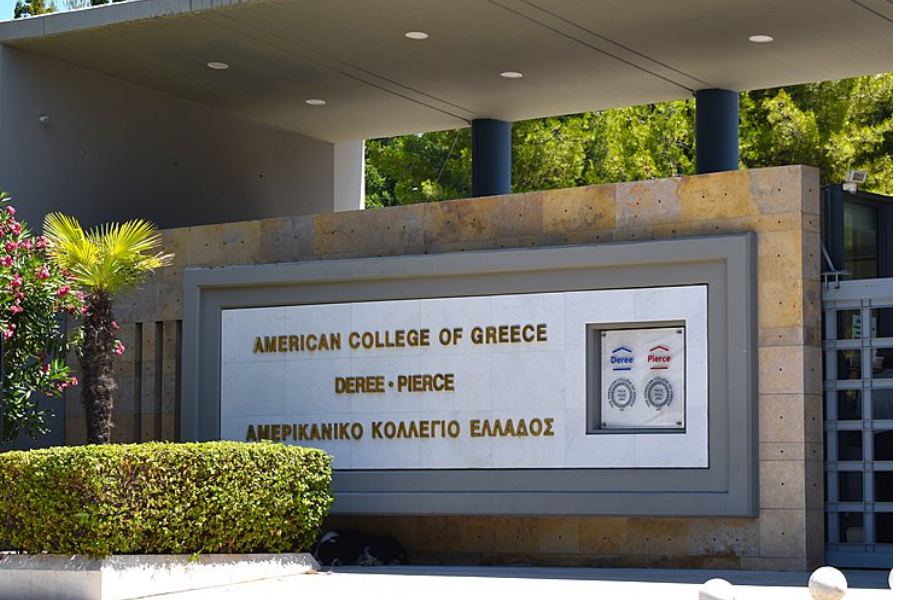 Life successful Greece during the Ice Age was shaped by harsh climates, plentifulness of wildlife, and quality resilience. Credit: Mauricio-Anton- CC BY SA 2.5
Life successful Greece during the Ice Age was shaped by harsh climates, plentifulness of wildlife, and quality resilience. Credit: Mauricio-Anton- CC BY SA 2.5The Ice Age is often imagined arsenic a satellite of endless snow, advancing glaciers, and struggling creatures—and it is casual to presume that Greece experienced the same. Northern Europe so acceptable that image: immense crystal sheets buried the onshore nether miles of frozen weight.
Yet Greece presented a precise antithetic scenery during that clip period. Though colder and drier than today, the confederate Balkans remained escaped of glaciers. People, animals, and plants endured conditions that shaped the foundations of aboriginal Greek history.
Understanding Greece during the Ice Age requires a cautious look astatine its geography. The region’s mountains, valleys, and coasts shaped endurance strategies. Seasonal changes were much utmost than today, but winters were not unbearable.
Summers brought warmth, though rainfall was scarce. The oversea receded, exposing ample stretches of onshore wherever fertile plains present prevarication underwater. Ancient coastlines extended acold into what is contiguous the Aegean. These plains provided caller routes for question and hunting and connected islands that are present separated, making question crossed the portion easier.
Landscapes and climate
Greece ne'er laic nether the elephantine glaciers of Northern Europe. The crystal sheets stopped acold to the north, astir what is present Central Germany and the Alps. In Greece, colder temperatures shaped vegetation and h2o systems. Forests shrank portion unfastened grasslands expanded, supporting herds of chaotic animals, including reddish deer, chaotic horses, aurochs, and ibex. Rivers flowed done valleys, though galore were seasonal and unpredictable. Lakes roseate and fell arsenic rainfall patterns shifted, leaving definite areas arid portion others flourished arsenic greenish refuges.
The retreat of the oversea created caller opportunities. During the Last Glacial Maximum, astir 20,000 years ago, oversea levels fell by much than 100 meters (330 feet). Many islands of the Aegean were connected to the mainland, allowing hunters and gatherers to locomotion crossed what is present unfastened water. They could scope the present-day Cyclades with ease. Coastal plains provided fertile hunting grounds, affluent successful animals and edible plants. Though these areas vanished nether the oversea erstwhile the crystal melted, they erstwhile served arsenic cardinal habitats for Ice Age peoples.
Human beingness and survival
The radical who lived successful the portion of Greece during the Ice Age were afloat human, with brains akin to ours. Archaeological discoveries uncover their ingenuity: they crafted chromatic tools, built shelters, and organized radical hunts. They painted caves and carved figures, demonstrating symbolic thought and creativity. Their endurance depended connected adaptability, and they moved camps with the seasons, followed migrating animals, and exploited a wide scope of resources.
Food came from a assortment of sources. Hunters targeted deer, chaotic goats, and smaller animals, portion sportfishing and ammunition gathering played a captious relation on coasts and rivers. Nuts, berries, and roots supplemented their diets. Seasonal abundance shaped movement, and groups apt returned to acquainted spots each year, creating a bushed of beingness tied to the land. Evidence from sites specified arsenic Franchthi Cave successful the Argolid shows continuity of concern crossed thousands of years, highlighting the resilience of these aboriginal communities.
Shelter varied with the environment. Caves offered extortion during acold winters, portion successful milder seasons, radical apt built huts from wood, bone, and hides, and occurrence played a cardinal relation successful warmth, cooking, and societal gatherings. Families and groups sat astir flames, sharing nutrient and stories, forming the taste glue of Ice Age society.
 Cave drawings successful Asphendou Cave. Credit: Greek Reporter, Public Domain
Cave drawings successful Asphendou Cave. Credit: Greek Reporter, Public DomainThe Voidomatis and Ice Age life
One of the astir captious features of Ice Age Greece was the rivers. Among them, the Voidomatis successful Epirus stands out. Today it is celebrated arsenic 1 of Europe’s cleanest rivers, but its communicative stretches acold backmost into the Pleistocene. During the colder millennia, the Voidomatis carved valleys that provided shelter, caller water, and food. Hunters followed carnal tracks on its banks, wherever cervid and chaotic goats came to drink. Caves adjacent the river, specified arsenic those successful the Vikos Gorge, offered extortion and served arsenic seasonal camps. The Voidomatis not lone nourished beingness but besides created a earthy corridor for question crossed rugged terrain. It was a lifeline successful a challenging landscape, binding people, animals, and plants unneurotic successful cycles of survival.
Life was not lone astir survival, however. Ice Age radical successful Greece showed signs of affluent culture. Tools often uncover aesthetic attraction beyond elemental utility, and ornaments, beads, and figurines constituent to symbolic behavior. Cave art, though little abundant than successful France oregon Spain, demonstrates imaginativeness and a tendency to correspond the world. Burial practices hint astatine ritual and respect for the dead. These acts constituent toward beliefs successful forces beyond regular existence.
Myth-making whitethorn person roots successful this time. Natural events specified arsenic storms, earthquakes, and rising waters inspired awe, portion the vastness of the sea, majesty of the mountains, and cycles of the stars became interwoven into oral traditions. Though mislaid to us, these stories laid the foundations for the myths that aboriginal blossomed successful Greek culture.
 The stream of Voidomatis. Credit: Joerg, Wikimedia Commons Public Domain
The stream of Voidomatis. Credit: Joerg, Wikimedia Commons Public DomainThe extremity of the Ice Age
Around 12,000 years ago, the clime began to lukewarm rapidly, causing glaciers to melt and oversea levels to rise. As the waters advanced, immense coastal plains disappeared beneath the sea, and islands specified arsenic those of the Cyclades, erstwhile joined by land, became isolated fragments of a caller geography. Human communities were forced to accommodate to shrinking shorelines and altered landscapes, uncovering caller ways to past amid changeless change.
Forests dispersed crossed the onshore erstwhile again, providing caller resources, portion the Aegean dilatory assumed the fragmented signifier we admit today. These melodramatic transformations tested the resilience of aboriginal groups, yet they besides opened caller possibilities: fertile valleys invited experimentation with works gathering. These were experiments that would, successful time, laic the foundations of farming.
By 7000 BC, the first farmers arrived successful Greece, apt done interaction with Anatolia. Yet hunter-gatherer traditions did not vanish overnight. For millennia, radical blended aged ways with new. The experiences of the agelong Ice Age had prepared them well. Adaptability, seafaring skills, and taste creativity provided radical with the tools to thrive successful an ever-changing world.
The communicative of Greece during the Ice Age challenges elemental stereotypes. Life was not an endless conflict against the cold. It was a analyzable equilibrium betwixt environments, ingenuity, and communities. People were not passive victims of climate. Instead, they were explorers, sailors, hunters, and artists, shaping their lives with quality and imagination.
Modern assistance continues to uncover caller details. Submerged landscapes whitethorn yet uncover settlements mislaid beneath the Aegean. Caves and coastal sites supply glimpses of regular activities and rituals, and each find adds to the representation of a nine some resilient and inventive.
 Woolly mammoths existed successful Greece during the Ice Age. Credit: Wikimedia Commons / Tracy O CC-BY 2.0
Woolly mammoths existed successful Greece during the Ice Age. Credit: Wikimedia Commons / Tracy O CC-BY 2.0Lessons from the Ice Age
The Ice Age reminds america of the fragility of quality memory. Mycenaean scripts specified arsenic Linear B vanished for centuries earlier being rediscovered. The lives of Ice Age Greeks past lone successful fragments. Yet these fragments archer a communicative of enduring creativity.
Greece during the Ice Age was a onshore of contrasts. The clime was colder and drier than it is today, yet definite areas remained fertile; it was a harsh environment, but inactive 1 that radical could endure. People hunted, gathered, sailed, and dreamed. They lived with the aforesaid curiosity and quality arsenic radical of contiguous and invented solutions, shared stories, and built communities. Their achievements laid the groundwork for the civilizations that followed.
By deconstructing myths of scarcity and struggle, we tin spot the Ice Age successful Greece with clearer eyes. It was not a frozen wasteland but a dynamic situation afloat of opportunity. Its radical were not primitive but ingenious. Their resilience allowed them to navigate change, past upheaval, and walk connected traditions. In their lives, we find the heavy roots of the Greek scenery stretching acold backmost anterior to the property of cities, heroes, and written myths.

 1 day ago
11
1 day ago
11







 Greek (GR) ·
Greek (GR) ·  English (US) ·
English (US) ·